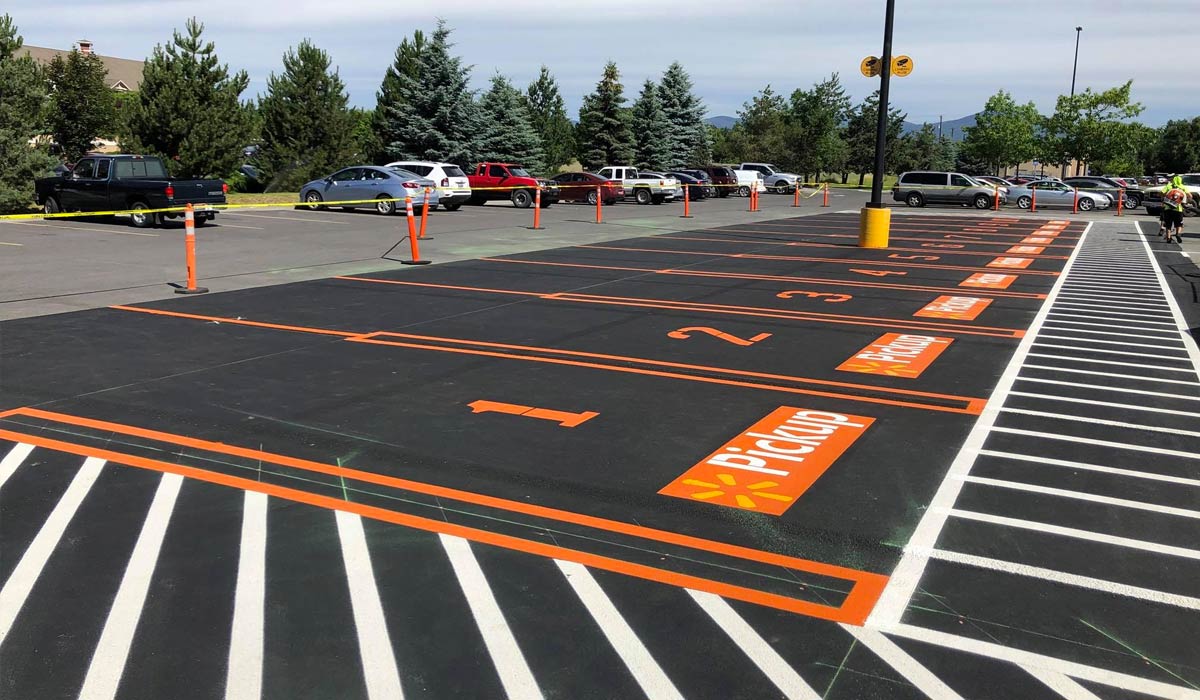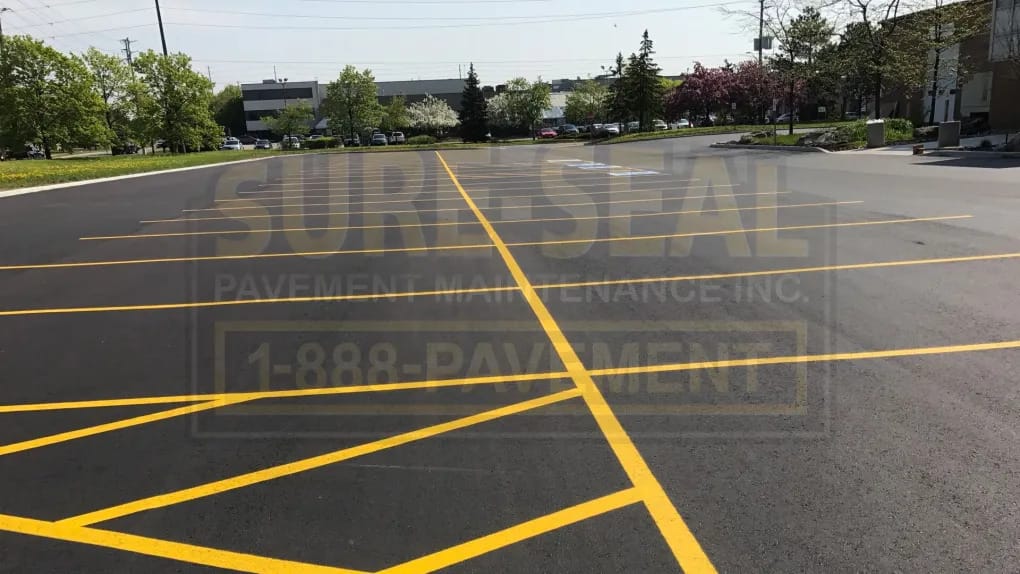Comprehending the Value of Roadway Paint in Urban Facilities Advancement
The role of roadway painting in urban framework growth extends beyond plain aesthetic appeals, working as a fundamental element in boosting security and enhancing website traffic flow. Reliable roadway markings not only offer critical advice for both drivers and pedestrians but additionally contribute to the overall capability of urban rooms. As cities develop, the assimilation of innovative styles right into roadway paint can substantially affect neighborhood characteristics and environmental sustainability. The question remains: how can urban coordinators stabilize these varied purposes to create engaging and really effective roadways?
Safety And Security Enhancements Through Roadway Markings
Frequently ignored in metropolitan facilities growth, road markings play a critical role in enhancing safety and security for both pedestrians and drivers. These markings act as essential aesthetic signs that guide automobile activity and develop order on streets. Appropriately developed and preserved roadway markings interact crucial info, such as lane limits, pedestrian crossings, and stop lines, efficiently decreasing the likelihood of crashes.
The exposure and quality of road markings are critical, especially in unfavorable weather. High-contrast materials and reflective paints aid make certain that markings remain noticeable at evening and throughout rainy problems, thereby boosting safety outcomes. The application of standardized symbols, such as arrowheads and pedestrian symbols, cultivates far better understanding amongst road users, advertising conformity with traffic policies.
Along with their functional aspects, roadway markings contribute dramatically to the overall visual of city settings. Well-executed roadway paint improves the visual allure of streetscapes while concurrently enhancing the significance of road safety and security. As cities remain to develop and grow, prioritizing the high quality and maintenance of roadway markings is important in cultivating a efficient and risk-free transport system for all users.
Influence On Traffic Circulation
Maximizing web traffic flow is considerably affected by the strategic application of road markings. Properly designed and kept roadway markings supply important assistance for vehicle drivers, assisting in smoother navigating via numerous traffic circumstances. By plainly defining lanes, indicating turning points, and marking crossways, road markings help in reducing confusion and prevent mishaps, inevitably improving general website traffic performance.
Furthermore, road markings play an essential duty in regulating vehicle rates. The use of lane decrease markings and speed limit signs can influence driver actions, encouraging adherence to secure driving practices. This, consequently, minimizes congestion and advertises an extra fluid activity of automobiles.
Furthermore, well-placed road markings can enhance the efficiency of traffic signals and indicators. By making certain that these components are visually enhanced via ideal pavement markings, chauffeurs obtain systematic and consistent details, enabling more informed decision-making.
In city atmospheres, where traffic thickness is high, the combination of advanced road paint techniques, such as reflective and polycarbonate products, can better enhance exposure under numerous weather conditions. In recap, effective road markings are crucial for maximizing traffic circulation, adding to safer and a lot more efficient metropolitan transportation systems.
Sustaining Pedestrian Navigation
Effective road markings are essential for sustaining pedestrian navigating, especially in metropolitan locations where foot traffic is considerable - Parking lot line striping. Clear, well-defined crosswalks, directional arrowheads, and pedestrian signs boost visibility and overview pedestrians safely across streets. These markings educate pedestrians of their right-of-way, minimizing the chance of crashes and improving general safety and security
Moreover, efficient road paint can define various areas within the urban environment, such as dividing pedestrian courses from vehicle lanes. This delineation fosters a much safer strolling experience, motivating raised foot traffic and promoting urban vitality. Markings that designate pedestrian-only locations or shared rooms further enhance navigation by clearing up where pedestrians can securely go across without disturbance from lorries.

View Line painting Abbotsford in a full screen map
Aesthetic Contributions to Urban Design
The visual payments of roadway painting considerably improve metropolitan style, changing regular streets into visually engaging spaces. Thoughtfully made highway markings and vibrant shades develop an aesthetic story that can mirror the identification of an area. Imaginative crosswalks, as an example, not just serve their practical function however also serve as public art installations, motivating neighborhood interaction and satisfaction.
Furthermore, the calculated use of color can affect assumptions of security and availability. Brightly repainted bike lanes and pedestrian areas can define spaces, making them more enticing and motivating their usage. This, consequently, fosters a feeling of neighborhood by promoting energetic transportation modes, such as strolling and biking.
Additionally, roadway paint plays a critical function in urban revitalization initiatives. By incorporating creative aspects into the road design, cities can develop a cohesive aesthetic that enhances the total metropolitan landscape, attracting visitors and locals alike. Such enhancements can lead to boosted economic task, as visually pleasing environments are more probable to attract people in. Eventually, the visual contributions of roadway painting are crucial for the creation of vivid, comfortable urban areas that resonate with the neighborhood's personality and ambitions.
Environmental Factors To Consider in Roadway Painting

To reduce these concerns, the adoption of environmentally friendly options is essential. Water-based paints and those made the original source from sustainable products aid decrease VOC discharges and boost total environmental impact. Furthermore, polycarbonate and reflective markings can boost presence while minimizing the requirement for regular description repainting, hence decreasing material usage gradually.
In addition, roadway painting can be integrated with metropolitan eco-friendly efforts, such as making use of absorptive products that allow rainwater to penetrate, thereby reducing runoff and advertising groundwater recharge. In summary, while road paint is crucial for urban functionality, it is vital that ecological factors to consider guide material selection and application methods to guarantee sustainable metropolitan development.
Conclusion
In verdict, road paint plays an essential role in metropolitan facilities growth by improving safety, enhancing traffic circulation, and sustaining pedestrian navigation. Furthermore, attention to environmental considerations in roadway painting contributes to lasting metropolitan growth.
